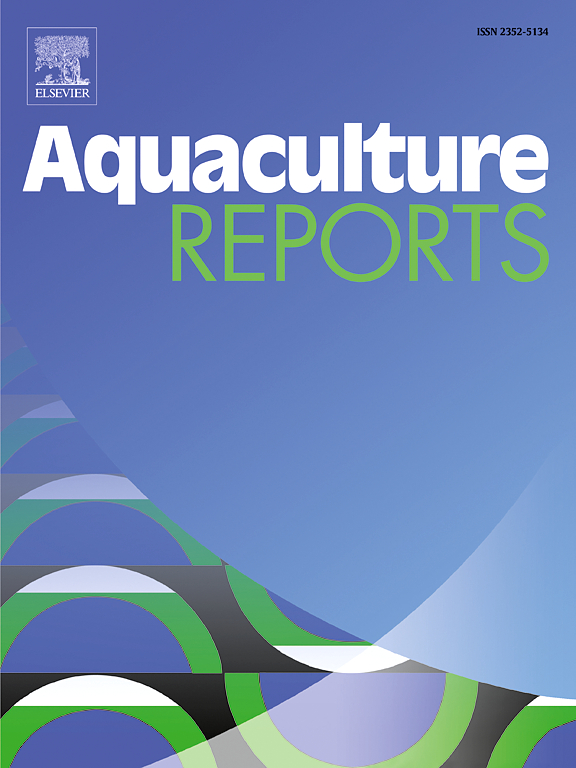Maturation of the biofloc system in Penaeus vannamei culture under different salinities and its effects on the microbial communities
IF 3.2
2区 农林科学
Q1 FISHERIES
引用次数: 0
Abstract
The purpose of the study is to evaluate the impact of varying salinity levels on bacterial communities that influence the maturation of the biofloc technology (BFT) system in Penaeus vannamei culture. The experiment involved four water treatments with different salinities: seawater from the Arabian Gulf with 44 ppt (M44), seawater diluted to 22 ppt (M22), well water with 22 ppt (W22), and seawater diluted to 11 ppt (M11). The study was conducted in triplicate using a completely randomized design, with a stocking density of 240 shrimps m−3 for 45 days until BFT reached a mature state. Water quality parameters were monitored daily, and the bacterial communities in the biofloc system were evaluated every 15 days. The results showed that salinity impacts both the water parameters and the nutritional composition of the biofloc culture. Bacteria that convert ammonia to nitrite matured more rapidly at low salinity (11 ppt), while bacteria that convert nitrite to nitrate matured faster at high salinity (44 ppt). Additionally, this study shows that microbial communities can shift significantly through the maturation process depending on competitive dynamics and the metabolic requirements of bacteria. This study indicates the crucial role of salinity in affecting the microbial community and maturation functionality of the BFT. The results further highlight the significance of preserving a varied and well-balanced bacterial community in biofloc aquaculture systems to optimize nitrification and water quality control.
求助全文
约1分钟内获得全文
求助全文
来源期刊

Aquaculture Reports
Agricultural and Biological Sciences-Animal Science and Zoology
CiteScore
5.90
自引率
8.10%
发文量
469
审稿时长
77 days
期刊介绍:
Aquaculture Reports will publish original research papers and reviews documenting outstanding science with a regional context and focus, answering the need for high quality information on novel species, systems and regions in emerging areas of aquaculture research and development, such as integrated multi-trophic aquaculture, urban aquaculture, ornamental, unfed aquaculture, offshore aquaculture and others. Papers having industry research as priority and encompassing product development research or current industry practice are encouraged.
 求助内容:
求助内容: 应助结果提醒方式:
应助结果提醒方式:


